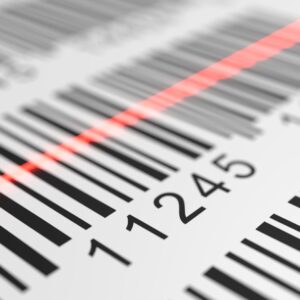READ OUR BLOG
The History of Barcodes in Healthcare & Its Use for Improving Specimen Tracking
 Every year, mislabeled patient and lab specimens cause 160,000 adverse medical events. Using barcodes to track specimens improves efficiency, but more importantly, it saves lives.
Every year, mislabeled patient and lab specimens cause 160,000 adverse medical events. Using barcodes to track specimens improves efficiency, but more importantly, it saves lives.
The History of Barcodes
In the 1940s, researchers Bernard Silver and Norman Joseph Woodland began creating barcode technology, and in 1952, they developed a barcode reader. The first commercial use of barcodes was to identify railroad cars in 1962, and by the 1970s, all kinds of industries, including healthcare, were adopting barcodes in innovative ways.
However, barcodes didn’t really take off in the healthcare realm until the 2000s. Take a look at this timeline to get a sense of how this relatively simple technology has reduced errors and improved the healthcare experience for both providers and patients, particularly when compared to tracking the same information on paper.
2004 — FDA Requires Barcodes on Certain Medications
To protect patients, the FDA required certain medicines to be labeled with barcodes containing the medication’s name, dosage, and manufacturer. With this information at their fingertips, healthcare providers can avoid accidentally giving counterfeit or expired drugs to their patients.
2005 — Barcoding Reduces Errors by 82%
A study published in Patient Safety and Quality Healthcare found that implementing barcode technology in five units of a community hospital reduced errors by 82%.
2006 — FDA Requires Barcodes on Blood Samples
To minimize errors, all blood samples must have barcodes showing the origin of the blood, the ID of the blood donor, and the blood type.
2007 — Barcodes Cited as Number One Priority for Error Reduction
The annual Healthcare Information and Management Systems Society (HIMSS) survey identifies barcode specimen systems as the number one priority for reducing medical errors and improving patient safety.
2010 — Study Shows Barcodes Reduce Mortality
A study in the New England Journal of Medicine reveals that barcoding technology prevents 90,000 serious medical errors every year and reduces mortality by 20%.
Benefits of Barcodes in Specimen Tracking
If specimens are tracked on paper, the opportunity for errors are more widespread. When patients receive the wrong tests results due to incorrectly labeled specimens, they may face serious or even deadly consequences.
Additionally, barcodes can help improve the accuracy of courier routing. If you’re sending specimens to other locations, paper records increase the risk of lost or misdirected specimens.
By implementing a barcoding system at your outreach lab, you can achieve the following benefits:
- Increased patient comfort
- Reduced delays in diagnosis or treatment
- Improved communications
- Decreased rework requests for nurses and lab staff
- Better community relations
Barcoding is a mature and reliable technology that improves patient care and can be easily adopted without a lot of equipment. A solution like the Zebra TC56 combines the familiarity of a smart phone with enterprise-grade mobile computing technology so your team can easily scan barcodes and access critical information about specimens, samples, or other items.
To see how this technology can streamline your workflows and improve efficiency, schedule a web demo with us today. You can reach us over the phone at 877-331-7427 x 105or via email at contact@medicalcourier.com. At Medical Courier Elite, we have the solutions you need to run your outreach lab as effectively as possible.
Let Us Know How We Can Help
Thanks for your interest in Medical Courier Elite! If you're interested in learning more about our solution and how it can help your business, we'd be happy to schedule a demo, provide a quote or answer any questions you may have.
181 East Evans St. | Florence, SC, 29506
Phone: 843-656-2084 or 877-331-7427
www.medicalcourier.com
contact@medicalcourier.com
